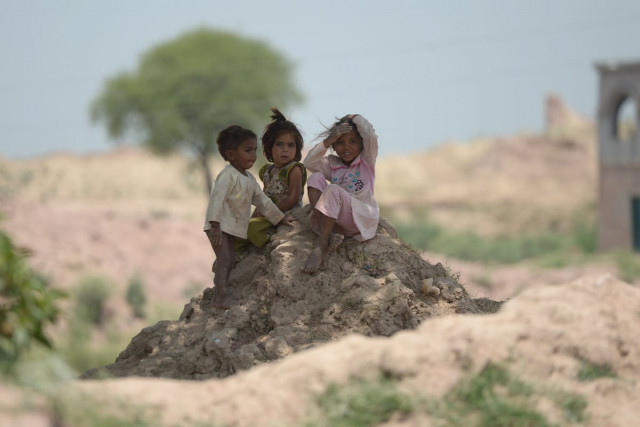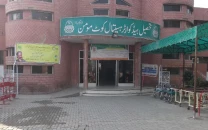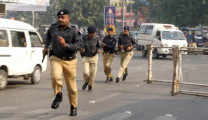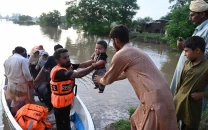Budgetary allocations: Little has been done for child development, says researchers
Report says only 11% schools in Lahore have toilets and drinking water

Report says only 11% schools in Lahore have toilets and drinking water. PHOTO: AFP
“The government has not carried out a census since 1998. It has, therefore, become difficult during research or policymaking to gauge the situation on ground,” said Fayyaz Yaseen, the research and development manager at the Democratic Commission for Human Development (DCHD).
Yaseen was speaking at the launch of a report, titled Budget Analysis from Child Rights Perspective in the Punjab Fiscal Years 2013-14 & 2014-15. The DCHD has prepared the report in collaboration with the Child Rights Movement (CRM).
Yaseen said the sum of all allocations focusing on health, education and social welfare programmes for children was 0.75 per cent of the gross domestic product (GDP). “This indicates the level of priority given to schemes meant for children.”
According to the report, the government had allocated 0.66 per cent of the GDP for education, 0.11 per cent for healthcare and 0.04 per cent for social welfare programmes for children.
The report shows that despite an increase in the overall allocation for education, the performance of the sector remained dismal. It states that in Lahore nearly 11 per cent of children are out of school. Only 11 per cent schools in the city have all the basic facilities, including toilets and drinking water. The fraction is 14 per cent in schools in other cities in the province.
In 2012, the percentage was 13 per cent. Yaseen said the budgetary increase had been largely for secondary education and not primary education.
The report shows that for a population of 80-90 million, there are only 151 hospitals, 194 dispensaries, 293 rural health centres and 2,461 basic health units with a total capacity of 37,272 beds. Although the budget for health has been doubled since 2009-10, allocations have decreased from 8 per cent to 5.4 per cent in proportion to the total outlay.
Economist Qais Aslam said it appeared that spending on children’s welfare was not a government priority. “This is why Pakistan lags far behind in achieving millennium development goals, especially with regard to the eradication of polio,” he said.
Aslam said that even violence-hit countries like Syria and Algeria had been successful in combating polio. He said that provinces did not focus much on important budget heads like debt. “A large share of the provincial budget should, by default, be spent on development schemes. But this is not the case,” Aslam said.
He said the governments often failed to spend the entire amount of budget. Policymakers should be held accountable for such discrepancies, he said.
Published in The Express Tribune, August 8th, 2015.



















COMMENTS
Comments are moderated and generally will be posted if they are on-topic and not abusive.
For more information, please see our Comments FAQ